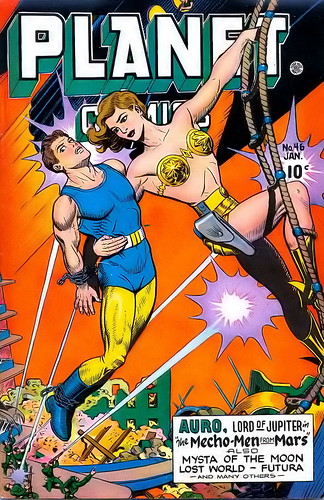 In a 1939 issue of Fantastic Adventures. John Russell Fearn published the science fiction pulp story The Golden Amazon. This story was unusual for the period in that a woman was the protagonist/antagonist. War-orphan Violet Ray is the The Golden Amazon, a woman mutated to be a superior being.
In a 1939 issue of Fantastic Adventures. John Russell Fearn published the science fiction pulp story The Golden Amazon. This story was unusual for the period in that a woman was the protagonist/antagonist. War-orphan Violet Ray is the The Golden Amazon, a woman mutated to be a superior being.However unintentionally, Violet Ray was a Wonder woman prototype complete with a Steve Trevor-like husband with whom she subjected to an almost Sabine relationship. Her superiority and beauty was such that any man was forced to submit to her.
Violet was very different than Princess Diana of Paradise Island. She did not intend to bring peace to the world through loving example. Instead she chose to bend "Man's World" to her will and achieved safety for herself and her progeny through violence. She was, to wit, a female version of every science hero of the pulp era.
The story was successful enough to spawn a series of novellas featuring the character and her descendants. Would that the legacy of Wonder Woman received as much attention as the lineage of Superman. One of the interesting artifacts of Planet Comics is that often women were the focus of attention as something other than a victim. Of the covers, quite often the female was the aggressive heroine of the scene battling robots or rescuing the hapless, handsome, man from danger. One could read a whole lot into the practice of Planet Comics not following the norm of the bulging hero with ray gun blasting coming to the aid of a girl in bondage who is suffering the lustful attention of a bug-eyed, presumably sexually-incompatible though perverse tentacled creature. Planet Comics, were stylistically using the Golden Amazon template.
Futura, Mysta and Gale Allen were all superior females making their own way in the long-running title. It seems on the surface that Fiction House Publishers were the model comic book company for gender equality in their characters. Likewise the Jungle, Jumbo and Fight titles featured women in leading roles. But the market of the day
 probably rules that out as being anything other than incidental though I am confident there were plenty of progressive attitudes on the part of the creators behind the scenes. What the majority of the market demanded though was gorgeous babes in peril. Boys liked reading about girls in fur bathing suits and science heroines mentally commanding robots to strangle Cyclopean tentacle monsters. Presumably young boys of the period enjoyed the content and the accompanying confusing tingles more than their female peers.
probably rules that out as being anything other than incidental though I am confident there were plenty of progressive attitudes on the part of the creators behind the scenes. What the majority of the market demanded though was gorgeous babes in peril. Boys liked reading about girls in fur bathing suits and science heroines mentally commanding robots to strangle Cyclopean tentacle monsters. Presumably young boys of the period enjoyed the content and the accompanying confusing tingles more than their female peers.Truth, justice and sexual politics have always been themes of the pulps and comics regardless of the gender of the creator, reader or character. Sometimes it is blatant pandering to the audience, sly subtext or overt attempts to make a large splash in ink. On rare occasions the product of the creators are completely devoid of any subtext or message though there can be more innocence to be found in a six year old's doodle of a pair of breasts than the professionally-written child's story crafted by an adult. Other times it is just a matter of creators giving the public what they believe they will accept in the confines of the status quo.
Mainly, pulps and comics are about the fetish in both the sexual and symbolic definitions. They give a safe, somewhat socially acceptable fix for satisfying the culturally programmed kinky, wish-fulfillment domination fantasies of one gender over another.
Planet Comics #46 (January 1947) finds Futura taking charge as the leader of the rebellion. Applying skills honed as an executive secretary Futura engages in some guerrilla action against a local outpost of the Brain-Men. The primarily male society that compromises the members of the rebellion aren't real happy to be ordered around by a newcomer and a woman but after Futura dresses up as a bird they acquiesce to her commands. I don't know what company Futura worked for as a secretary but considering how easily she successfully achieved scorched earth against her enemies I gather they probably had a lot of branch offices in various foreign theaters of conflict.
Here is Chapter 4 of Futura. Enjoy!
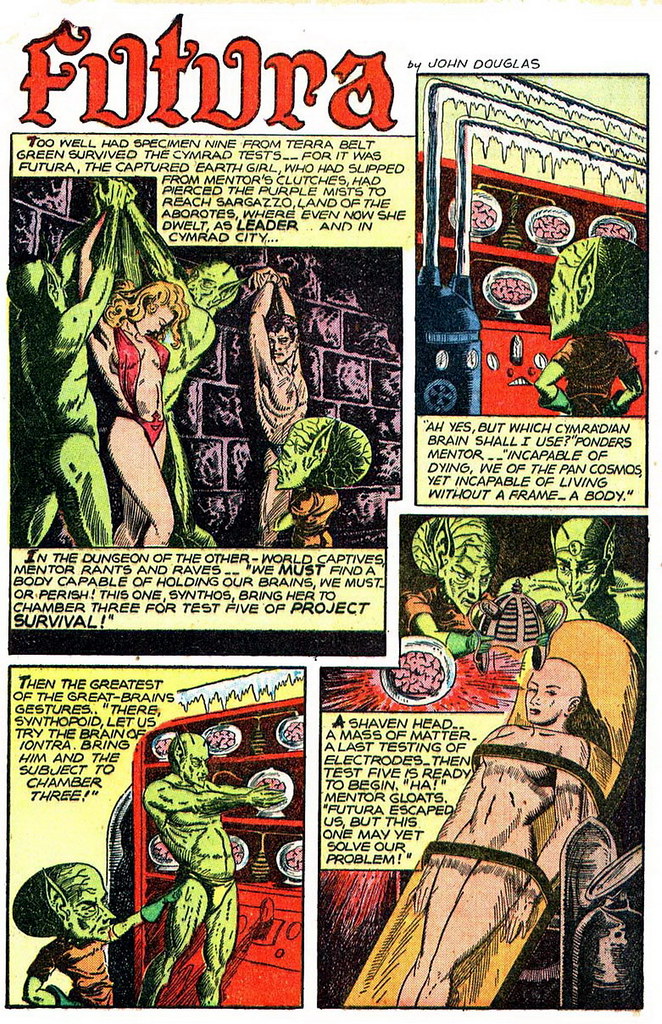

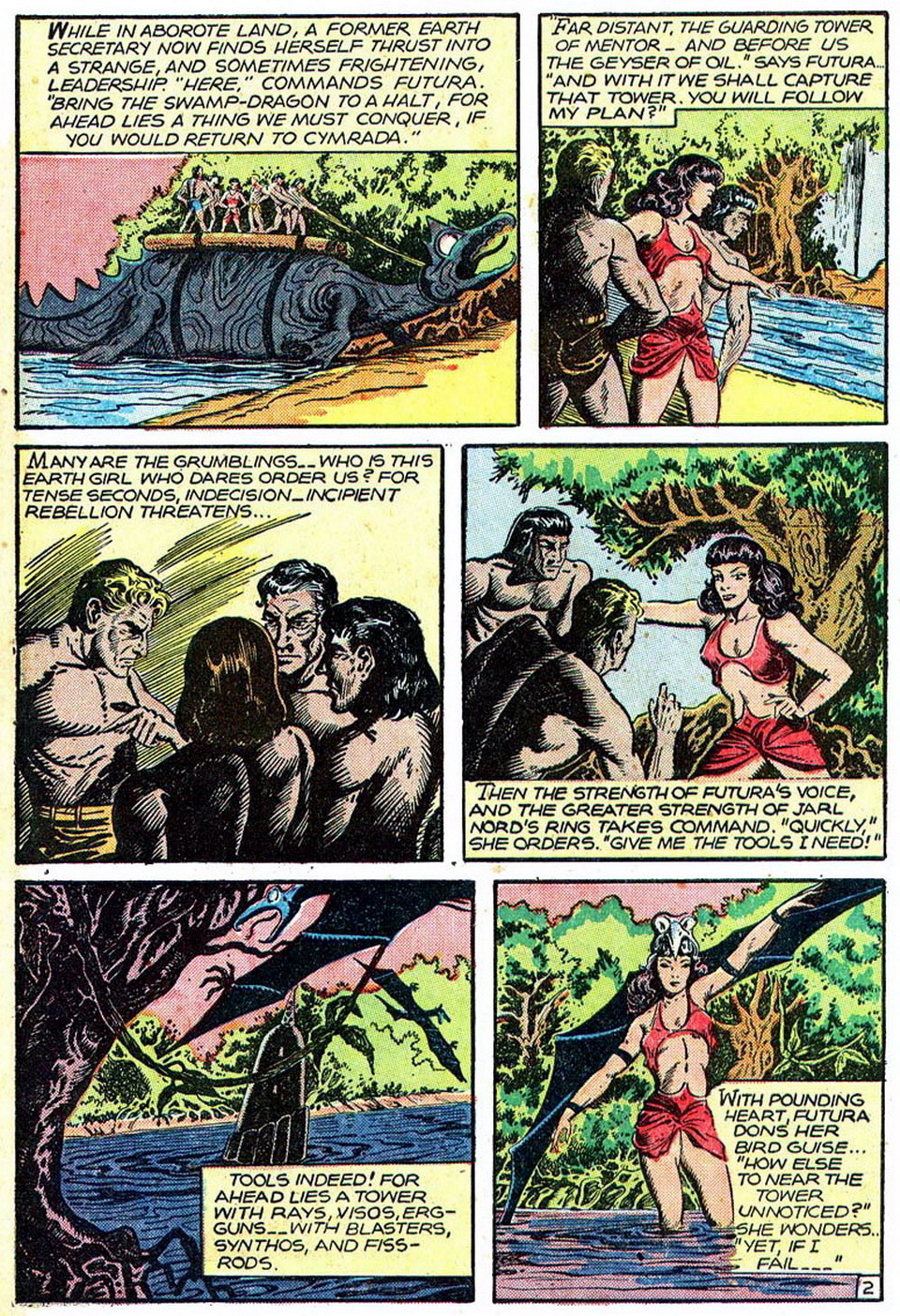

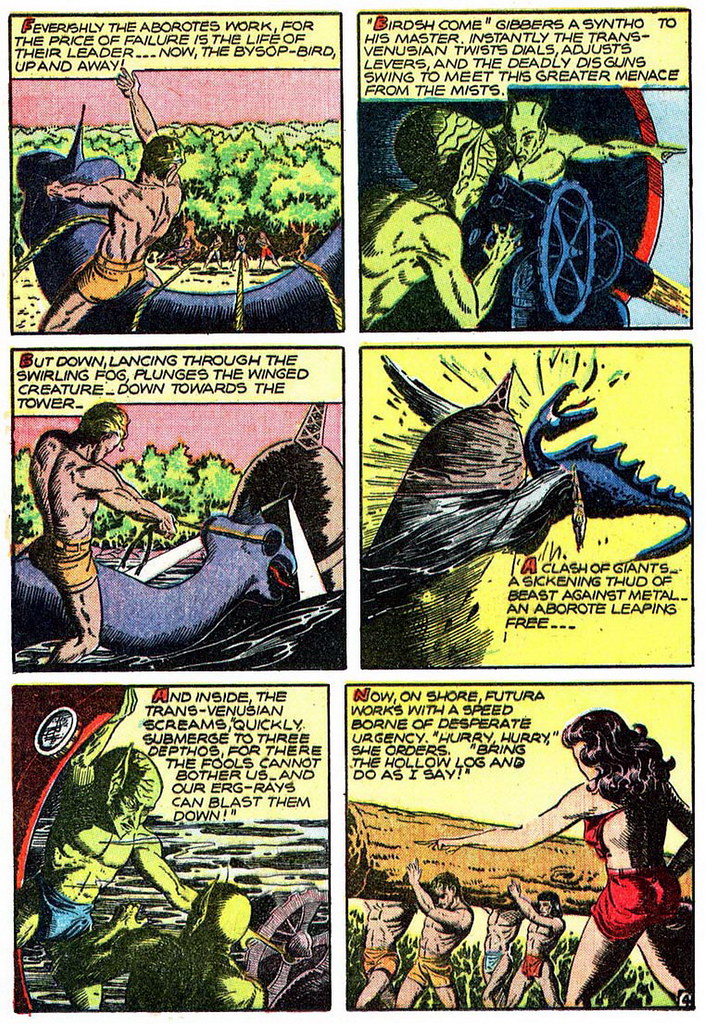
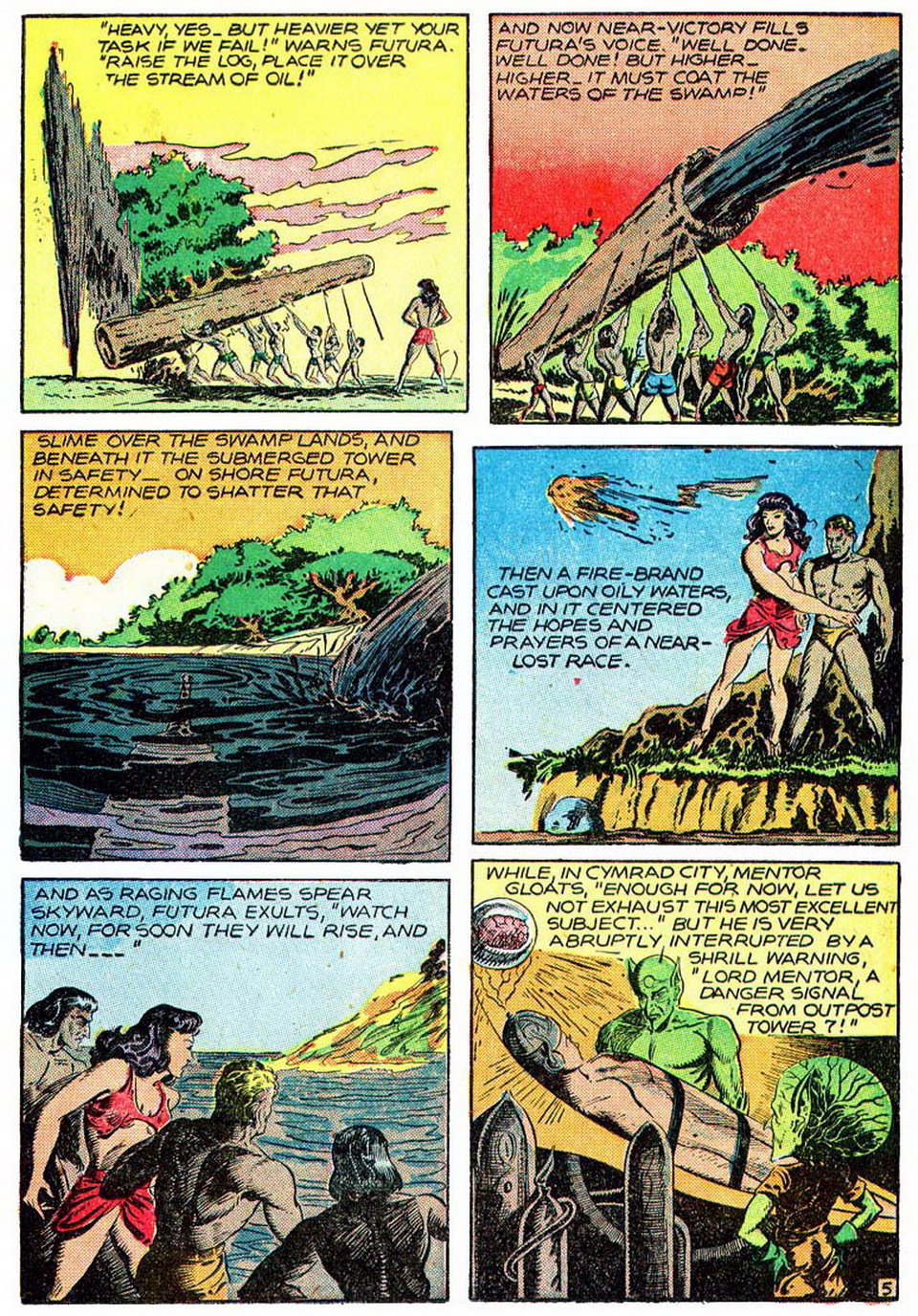

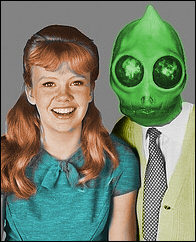

























No comments:
Post a Comment
Moderation enabled only because of trolling, racist, homophobic hate-mongers.
Note: Only a member of this blog may post a comment.